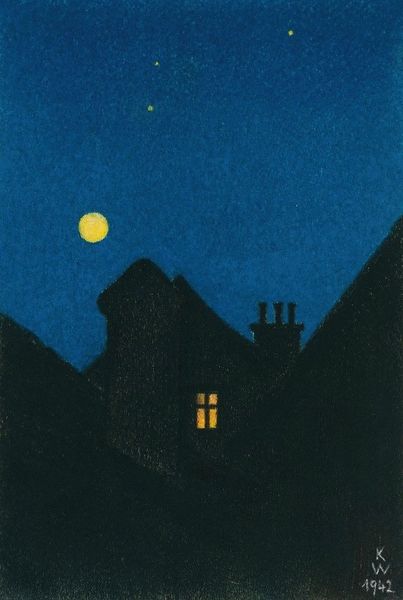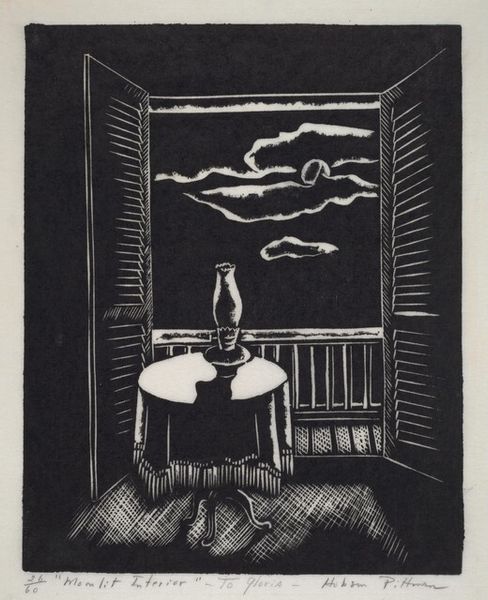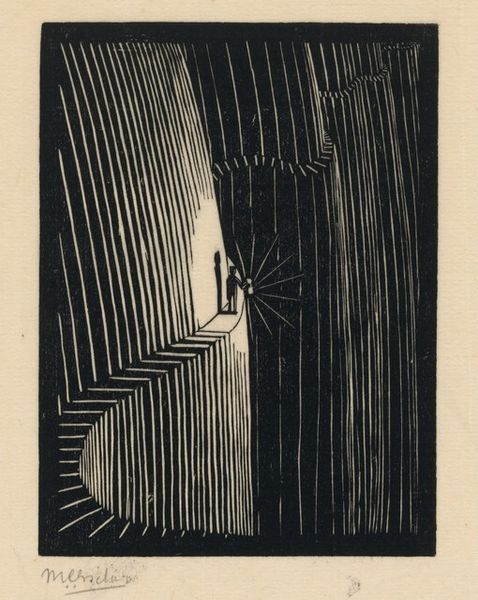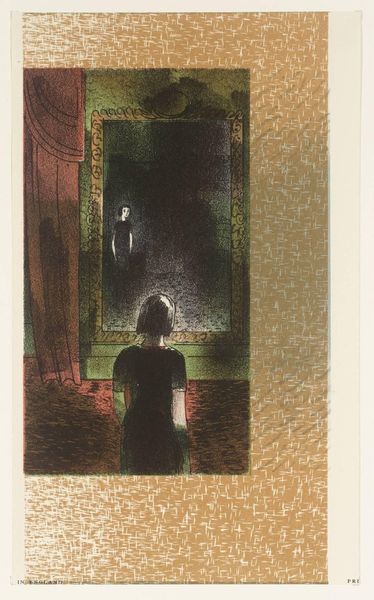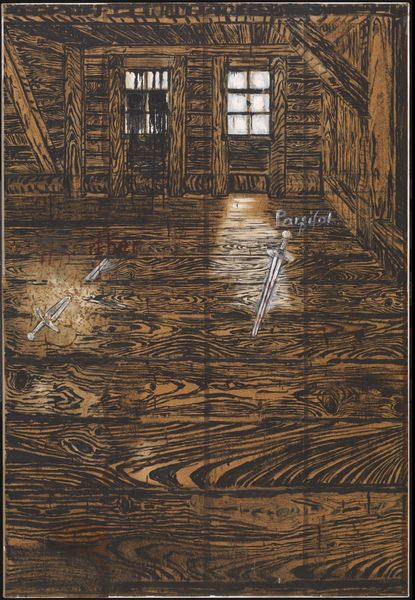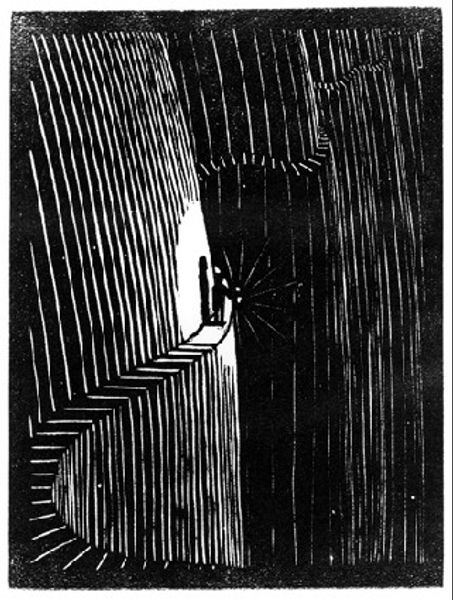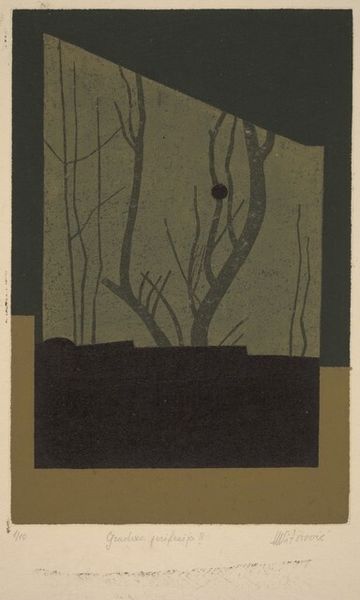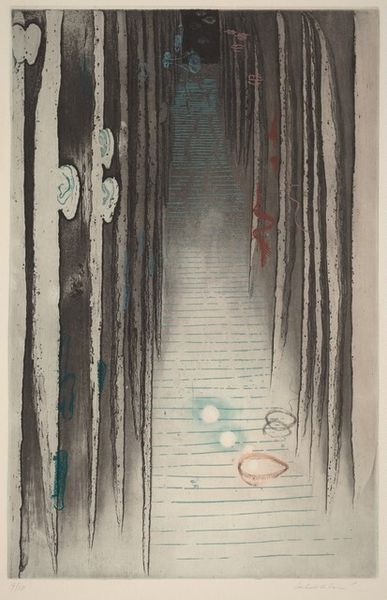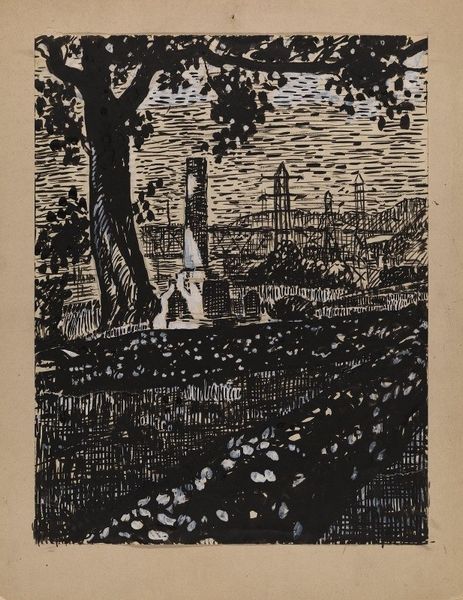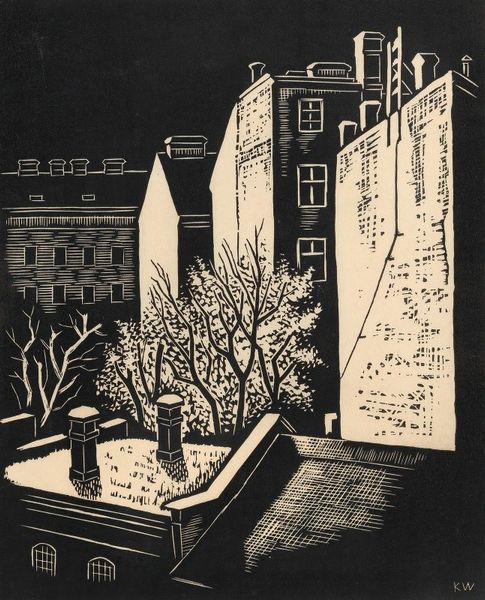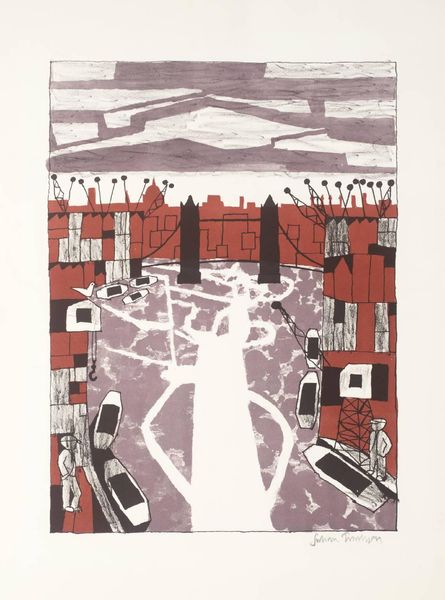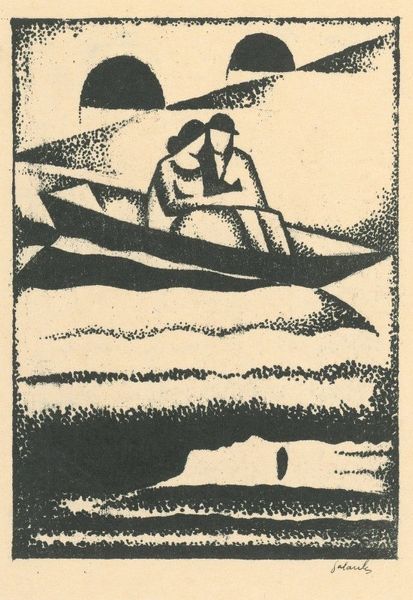
drawing, ink
#
drawing
#
aged paper
#
toned paper
#
blue ink drawing
#
quirky sketch
#
sketch book
#
landscape
#
personal sketchbook
#
ink
#
coloured pencil
#
expressionism
#
line
#
sketchbook drawing
#
cityscape
#
watercolour illustration
#
sketchbook art
Copyright: Public Domain: Artvee
Curator: Here we have Karl Wiener's "Nacht," created around 1923. It's an ink and colored pencil drawing, quite a simple sketch, really. What do you think? Editor: The high contrast grabs me immediately. That lonely lamppost casts a strangely compelling light in what looks like a desolate corner of a city. It’s eerie. Curator: Eerie indeed. Wiener employed blue ink and what seems to be watercolor illustration on toned paper. Considering its creation, during the interwar period, what socio-political elements resonate for you? Editor: Absolutely. It evokes a strong sense of alienation that mirrors the widespread sense of disillusionment felt in the wake of the First World War, the crumbling societal structures, the feeling of being trapped and exposed. Even those gridded windows above seem like watching eyes, and who occupies those spaces? It reflects societal surveillance, a potent commentary given the political climate of the time. Curator: It’s fascinating how such minimalist means, like those frantic, scratchy lines, render that weighty feeling. His method is interesting because it moves beyond the typical ‘high art’ studio; we can see its likely rooted in the quick impressions, the daily labor, that is embodied in sketchbook art. It suggests an intimacy and immediacy lacking in more formal artistic products. Editor: And that sketchbook feel amplifies its power. The artist seemingly snatched a moment amidst social upheaval to reflect through this stark vista. It makes one consider not just the aesthetics, but the act of resistance or documentation inherent in even these modest-seeming mediums and forms of production. Curator: Wiener’s composition effectively blurs the lines between public and private spaces too. The exposed "room" could signify private thoughts made vulnerable, especially under such intense circumstances. Editor: Agreed. And what is he saying about society's responsibilities for protecting such vulnerable minds? Is he commenting on a loss of community through this solitary urban light source and foreboding darkness, making his artwork a call to social accountability and highlighting themes of psychological solitude. Curator: Looking at the artistic choices here, and its manifestation in his landscapes, Karl was deeply investigating these types of questions on paper during such uncertain moments, it certainly holds contemporary importance. Editor: Agreed. It is a reminder how artistic statements in those times challenged society and still shape understandings today.
Comments
No comments
Be the first to comment and join the conversation on the ultimate creative platform.
